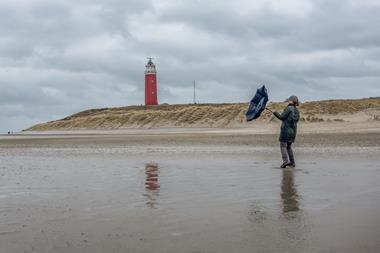When the largest Dutch pension fund ABP doubled its investment in microfinance several weeks ago, it again moved the spotlight onto the asset class.
ABP started investing in the $200m (€147m) Luxembourg-based SICAV Dexia Micro Credit Fund managed by Geneva-based microfinance investment manager BlueOrchard as part of its social finance portfolio two years ago with $5m after some in-depth due diligence. And after the fund returned more than 6% on a yearly basis - around 2% over swaps - the pension fund felt encouraged to double its investment to $10m in 2006 and from $10m to $20m in 2007.
Huub Hamers, fund manager for structured investments in alternatives at ABP, thinks that a pension fund's main risk lies in the selection of a manager. He says: "A major part of the due diligence was that the default risk was managed because it is a major risk with microfinance investments. In this case the default risk is mitigated by BlueOrchard through selecting the best micro finance institutions (MFIs). And on top of that, the default risk is mitigated through a group guarantee demanded by most micro banks: loans are not granted to an individual but a group. The result of this policy is a very good social control to pay back the loan."
Jean-Philippe de Schrevel, founder and managing director of BlueOrchard, believes the main concerns pension funds have is that their the money is properly used, well-managed and will return what was promised. Other risks in microfinance are political - where politicians in the invested country are trying to compete against or restrict microfinance - or a country risk, whereby a specific country decides not to close any international payments. These risks can be minimised by good screening and targeting the best microfinance organisations in the right countries, according to de Schrevel.
Investments in microfinance by pension funds like ABP are often prompted by the low correlation microfinance has with the regular financial markets and its insulation to microeconomic shocks and financial crises. De Schrevel adds that a good track record - like the Dexia Micro Credit Fund's eight year track record of over 400 issued loans, no defaults and diversification in across 27 countries - almost non-existent volatility, a strong credit quality of the underlying microfinance organisations, a choice of funds and CDOs (collateralised debt obligations) as well its fast-growing emerging market segment also make microfinance attractive to institutional and other investors. Hamers and de Schrevel believe that apart from decent returns, microfinance's big impact on social and economic developments - the erasure of poverty and creation of jobs - is also taken into account in investment decisions.
An increasing interest in microfinance by other pension funds has been noticed by Hamers. But he says due to a lack of data and transparency, which prevent oversight of the micro finance market, a minimum as well as an optimum level of investment is hard to determine in the asset class. ABP, he says, mainly follows the market.
In general, pension funds are guided by the exposure, the stake they are representing in any particular fund, and management costs, according to de Schrevel. He thinks that a pension fund would typically like to represent 10-15% of a fund but says a significant minimum investment level does not exist. In the Dexia Micro Credit Fund, for example, he says the minimum contribution is only $10,000.
De Schrevel says: "Of course when you look at the AUM of pension funds, the amounts invested in microfinance are minimal but I think it's a good sign that they are starting to be interested."
Hamers says that increasing professionalism by the microfinance institutions is attracting more commercial investors to a market that until now has been dominated by non-profit organisations. And like de Schrevel, he believes that if more commercial investors enter this market, it will enable micro banks to operate more efficiently and develop. De Schrevel adds that if microfinance attracts capital markets and a private investor base such as pension funds, it can grow significantly. But he says the progress so far has been good. He explains: "We still need to convince more for-profit, commercial investors that microfinance is an attractive investment proposition. The way to do that is by developing products that have an excellent track record and deliver a performance that has been promised. BlueOrchard started six years ago with only $10m under management but six years later we are close to $600m. This is still very small compared to other industries but shows enormous growth. The best microfinance organisations today are still growing by 50% per year with outstanding portfolio quality."
ABP may only invest a tiny percentage of its overall AUM of €209bn in microfinance, but Hamers says this is due to the growing but still small supply of qualified funds with a good track record. He adds: "The fund size compared to that in real estate or infrastructure is very low, which limits investment possibilities. Most funds have a size of around €100m so our policy is to participate in a fund with a share of 10-20%. But if any new funds emerge it is our policy to look at them and decide whether it is a good enough fund to increase our investment in the sector."












No comments yet